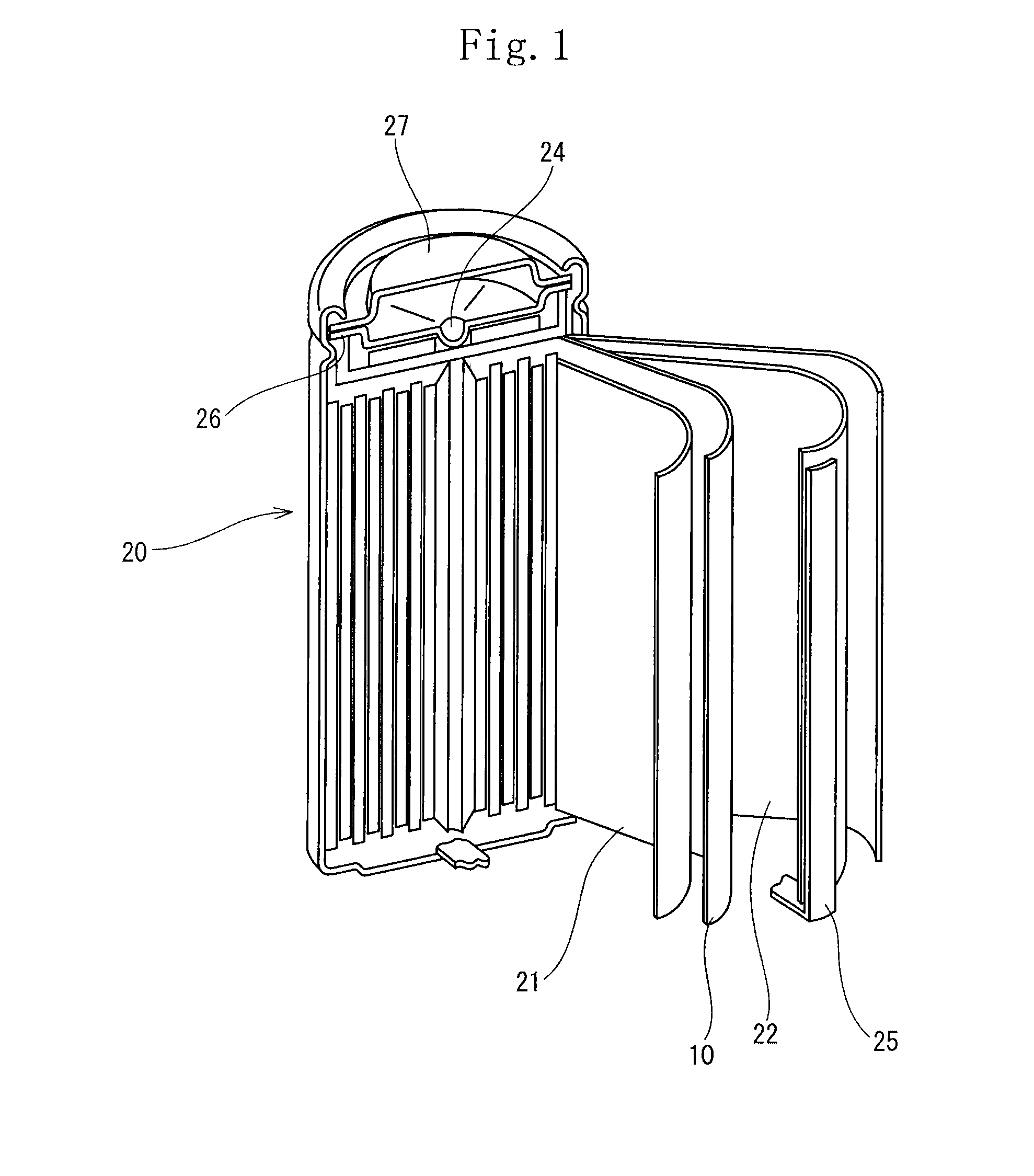Laminated porous film, separator for battery, and battery
a technology of laminated porous film and separator, which is applied in the direction of cell components, final product manufacturing, sustainable manufacturing/processing, etc., can solve the problems of breakage of the separator, adverse effects on the productivity of the battery, and the inability to pull the battery elements out of the pin, etc., and achieve excellent slip performance and pull performance.
- Summary
- Abstract
- Description
- Claims
- Application Information
AI Technical Summary
Benefits of technology
Problems solved by technology
Method used
Image
Examples
example 1
Polypropylene Resin Film
[0213]As a layer A, polypropylene resin (“F300SV” produced by Prime Polymer Corporation, density: 0.90 g / cm3, MFR: 3.0 g / 10 minutes) and N,N′-dicyclohexyl-2,6-naphthalene dicarboxylic amide serving as the β crystal nucleating agent were prepared. 0.2 parts by mass of the β crystal nucleating agent was blended with 100 parts by mass of the polypropylene resin. After the components were supplied to a same direction twin screw extruder (diameter: 40 mmφ, L / D: 32) produced by Toshiba Machine Co., Ltd and fused and mixed with each other at a set temperature of 300° C., a strand was cooled and solidified in a water bath and cut by a pelletizer to prepare a pellet of a polypropylene resin composition. The β activity of the polypropylene resin composition was 80%.
[0214]Thereafter as the mixed resin composition composing a layer B, 0.04 parts by mass of glycerol monoester and 10 parts by mass of microcrystalline wax (“Hi-Mic 1080” produced by Nippon Seiro Co., Ltd.) w...
example 2
[0220]39.2 parts by mass of alumina (Sumicorundum AA-03 produced by Sumitomo Chemical Co., Ltd., average particle diameter: 0.3 μm) and 0.8 parts by mass of the polyvinyl alcohol (PVA120 produced by Kuraray Co., Ltd., saponification degree: 98.0 to 99.0, average degree of polymerization: 2000) were dispersed in 60.0 parts by mass of water to obtain a dispersion solution. After the obtained dispersion solution was applied by using the gravure coater to the corona treatment surface of the laminated porous film, composed of the polyolefin resin, produced in the example 1, the obtained dispersion solution was dried at 75° C.
[0221]The properties of the obtained laminated porous film were evaluated. The results are shown in table 1.
example 3
[0222]38.0 parts by mass of the alumina (Sumicorundum AA-03 produced by Sumitomo Chemical Co., Ltd., average particle diameter: 0.3 μm) and 2.0 parts by mass of the polyvinyl alcohol (PVA120 produced by Kuraray Co., Ltd., saponification degree: 98.0 to 99.0, average degree of polymerization: 2000) were dispersed in 60.0 parts by mass of water to obtain a dispersion solution. After the obtained dispersion solution was applied by using the gravure coater to the corona treatment surface of the laminated porous film, composed of the polyolefin resin, produced in the example 1, the obtained dispersion solution was dried at 75° C.
[0223]The properties of the obtained laminated porous film were evaluated. The results are shown in table 1.
PUM
| Property | Measurement | Unit |
|---|---|---|
| Temperature | aaaaa | aaaaa |
| Temperature | aaaaa | aaaaa |
| Fraction | aaaaa | aaaaa |
Abstract
Description
Claims
Application Information
 Login to View More
Login to View More - R&D
- Intellectual Property
- Life Sciences
- Materials
- Tech Scout
- Unparalleled Data Quality
- Higher Quality Content
- 60% Fewer Hallucinations
Browse by: Latest US Patents, China's latest patents, Technical Efficacy Thesaurus, Application Domain, Technology Topic, Popular Technical Reports.
© 2025 PatSnap. All rights reserved.Legal|Privacy policy|Modern Slavery Act Transparency Statement|Sitemap|About US| Contact US: help@patsnap.com



